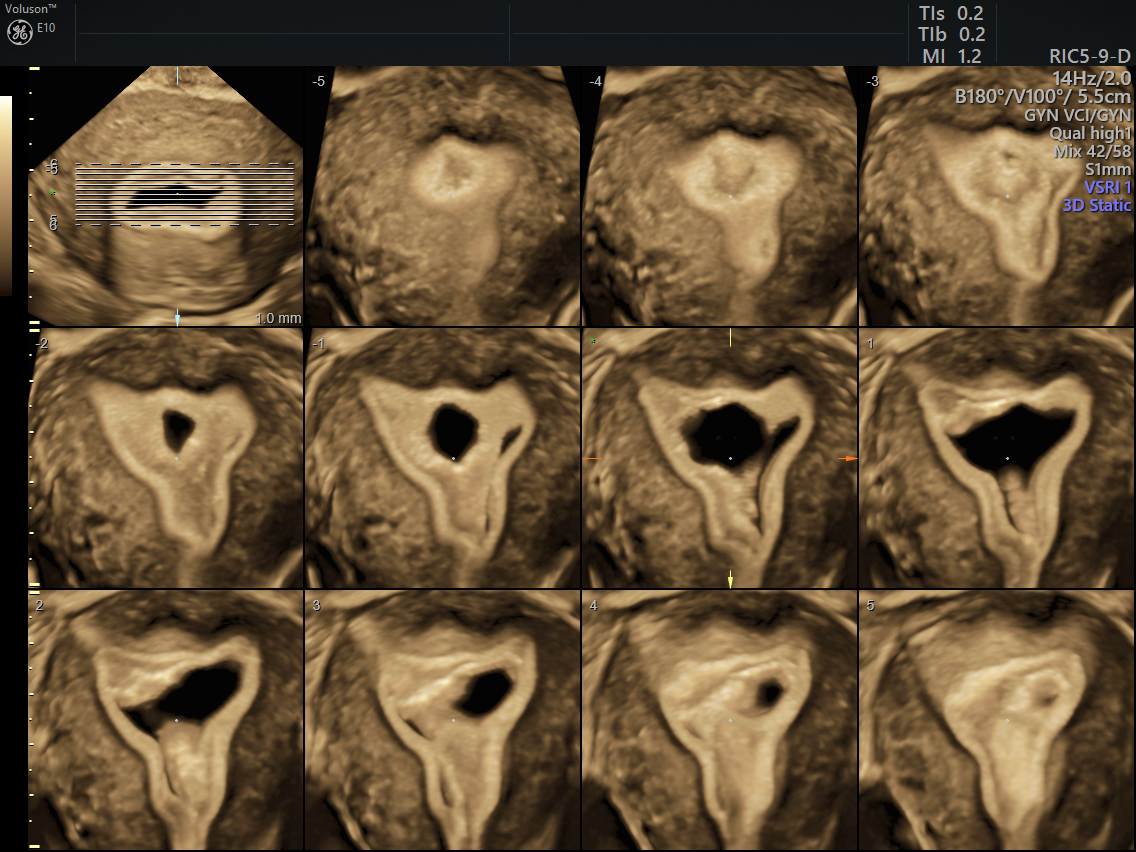Patients who have stopped menstruating commonly schedule gynecology appointments to address abnormal uterine bleeding. According to OBG Management, approximately 1 in 8 patients experiencing postmenopausal bleeding will be diagnosed with endometrial cancer. Because of the seriousness of the condition, time is of the essence when evaluating bleeding in postmenopausal women, explained gynecologist Steven Goldstein, MD.
Evaluating Postmenopausal Bleeding With 3D Ultrasound
In the past, physicians evaluated gynecologic problems such as bleeding with endometrial biopsies, or with costly and complex imaging studies such as CT scans. These options can present a financial burden to patients and often require referrals to off-site imaging specialists.
The advent of transvaginal ultrasound changed the way gynecologists evaluate bleeding in postmenopausal patients. In particular, advances in ultrasound technology improved the physician's ability to make quick and precise diagnoses by harnessing the power of 3D imagery to visualize the pelvis.
In comparison to standard 2D ultrasound, 3D ultrasound systems can reconstruct the coronal plane, creating images that more realistically represent internal organs, including the uterus. Better visualizations help physicians more precisely identify causes of bleeding in postmenopausal patients, including fibroid tumors, endometrial polyps and uterine adhesions.
Benefits of 3D Transvaginal Ultrasound During Diagnosis
Transvaginal ultrasound is also more affordable than CT scans for both patients and physicians. Many gynecologists are already familiar with this technology, and those who are not can easily learn how to use it. As a result, practitioners can offer 3D ultrasound directly from their offices, eliminating the need for referrals and hastening the time to diagnosis.
Additional benefits of 3D ultrasound for evaluating postmenopausal bleeding include:
- Precision. The thickness of the endometrial lining is a key differentiator in cases of uterine cancer, Dr. Goldstein explained. Using 3D transvaginal ultrasound enables physicians to determine the thickness of the endometrium. A thicker lining (greater than 4 millimeters) is associated with the vast majority of uterine cancers, according to a study published in Gynecologic Oncology.
- Speed. Due to its high negative predictive value, transvaginal ultrasound is a reliable way to quickly rule out uterine cancer, helping you save valuable time — not to mention patient anxiety — when making a diagnosis.
- Flexibility. Transvaginal ultrasound can be combined with saline infusion sonohysterography, a technique in which a small volume of saline is used to distend the uterine cavity. This can improve visualization of the endometrium, making it a minimally invasive alternative to a hysteroscopy for evaluating bleeding in some postmenopausal patients.

3D saline infusion ultrasound with Tomographic Ultrasound Imaging
Combined, these benefits empower physicians to accurately identify causes of postmenopausal bleeding without subjecting patients to the added stress of visiting external facilities for further testing. Given the seriousness of the condition, the investment in 3D ultrasound pays for itself in terms of patient peace of mind alone.





